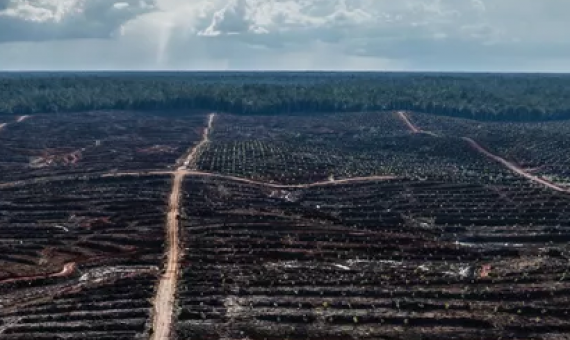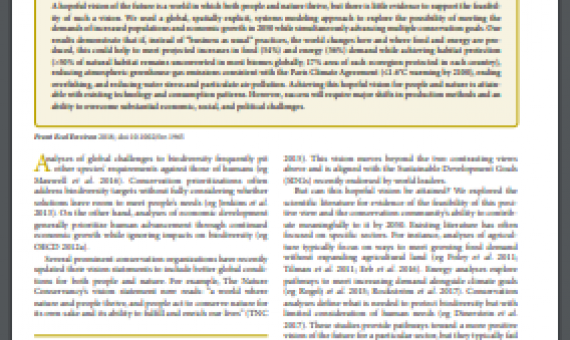Strangely, biodiversity indicators used to describe the state of the environment and measure progress toward the Aichi targets consider only native species.
We strongly disagree with the approach of combining counts of native and non-native species because this will reduce our capacity to detect the effects of non-native species on native biodiversity with potentially devastating consequences. Click on the link below to access the full paper
Here, I argue that biodiversity and sustainability indices should include all species. This is not only consistent with definitions of biodiversity but also will promote the idea that long-term, sustainable, human well-being is intricately tied to benefits derived from nature.
The world has two years to secure a deal for nature to halt a ‘silent killer’ as dangerous as climate change, says biodiversity chief. Click on the link below to read the full article.
An attainable global vision for conservation and human well-being
A hopeful vision of the future is a world in which both people and nature thrive, but there is little evidence to support the feasibility of such a vision. We used a global, spatially explicit, systems modeling approach to explore the possibility of meeting the demands of increased populations and economic growth in 2050 while simultaneously advancing multiple conservation goals.
The Living Planet Report 2018 is the twelfth edition of the report and provides the scientific evidence to what nature has been telling us repeatedly: unsustainable human activity is pushing the planet’s natural systems that support life on Earth to the edge.
Here is the IUCN's position paper on review of progress and the post-2020 biodiversity framework, for the upcoming CBD COP14 (17-29 November) in Egypt. Click on the link below to read the full paper.
MPAs can play a significant role in addressing the threats facing the ocean. These areas can help boost ocean biodiversity, fisheries, and the economies that depend on them. Click on the link below to read the full article.
Biodiversity is under siege, with greatly enhanced rates of local and global extinction and the decline of once-abundant species. Current rates of human-induced climate change and land use forecast the Anthropocene as one of the most devastating epochs for life on earth.
A hopeful vision of the future is a world in which both people and nature thrive, but there is little evidence to support the feasibility of such a vision. Click on the link below to access the full paper.















